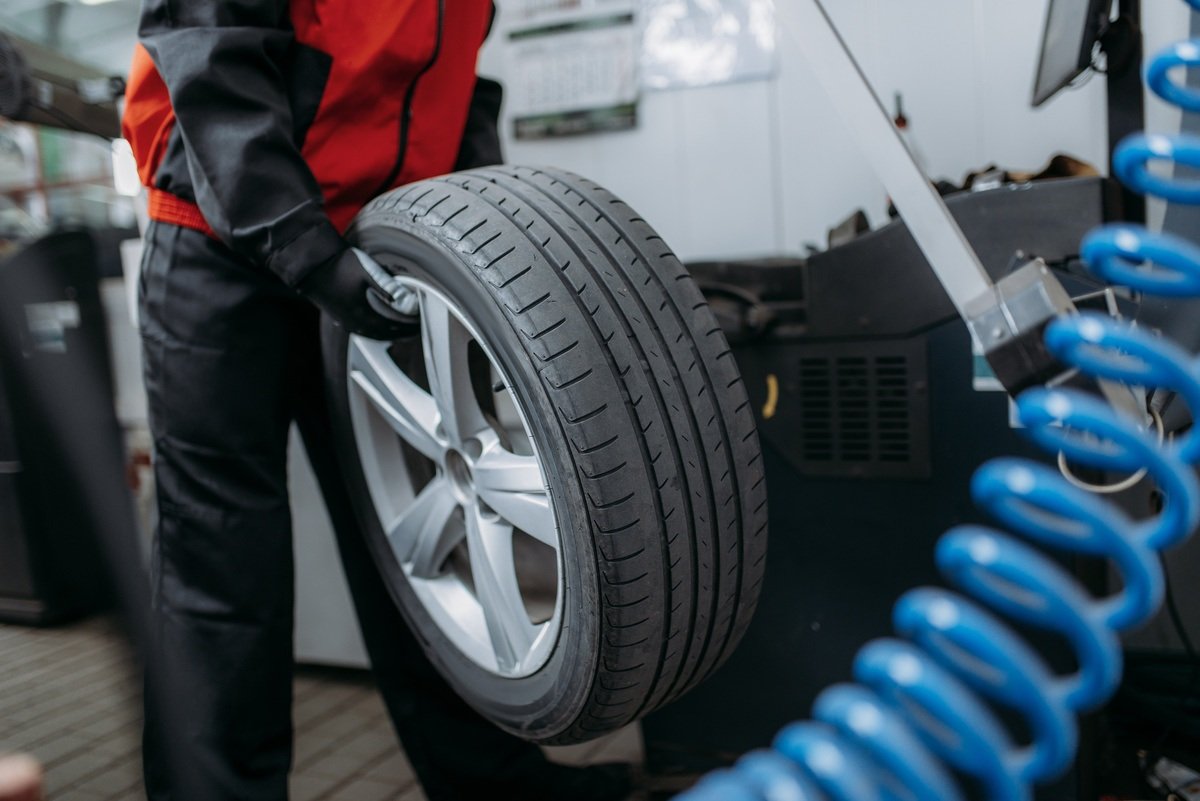How to Explore Advanced Features of Modern Automotive Tire Balancers
When it comes to maintaining optimal vehicle performance and safety, balancing tires plays a crucial role. Automotive tire balancers have evolved significantly, offering advanced features that improve accuracy, speed, and ease of use. As automotive repair shops and mechanics seek efficient tools to deliver quality service, understanding how to explore these advanced features is key. This article will guide you through the cutting-edge technologies and capabilities of modern automotive tire balancers, helping you make the most of this essential equipment in your shop.
Understanding the Importance of Tire Balancing
Tire balancing ensures that the tire’s weight is evenly distributed across the wheel, preventing uneven wear and improving vehicle performance. Properly balanced tires provide smoother rides, reduce strain on the suspension, and extend the tire’s lifespan. Modern automotive tire balancers incorporate advanced technologies to enhance these outcomes and ensure a precise balancing process, vital for overall vehicle safety and performance.
Why Proper Tire Balancing Matters
Unbalanced tires can cause vibrations, especially at high speeds, leading to a rough driving experience. This not only makes driving uncomfortable but also negatively affects the vehicle’s alignment and handling. Modern tire balancers ensure precise balance, leading to better fuel efficiency, improved comfort, and reduced wear on suspension components.
Key Features of Modern Automotive Tire Balancers
The latest models of automotive tire balancers come with sophisticated features designed to make the balancing process quicker, easier, and more accurate. Here are some key features that set modern balancers apart from their older counterparts.
Laser-Guided Weight Placement
One of the most significant advancements in tire balancers is the introduction of laser-guided weight placement. This feature uses lasers to pinpoint the exact location where balancing weights should be applied. With this precision, mechanics can ensure that weights are placed accurately, resulting in a perfectly balanced tire.
Benefits of Laser-Guided Systems
Laser-guided weight placement reduces human error and speeds up the process by eliminating guesswork. It also ensures a more professional finish, as the weights are applied precisely, improving customer satisfaction and tire longevity.
Automatic Rim Measurement
Modern balancers come equipped with sensors that automatically measure the dimensions of the rim. This feature eliminates the need for manual measurements, speeding up the process and reducing the likelihood of mistakes. The machine automatically adjusts to accommodate different wheel sizes and rim types, making it versatile and easy to use.
How Automatic Rim Measurement Improves Efficiency
Automatic rim measurement saves time, especially in busy workshops where efficiency is crucial. It also ensures that the correct balance is applied every time, minimizing the risk of imbalance due to measurement errors.
Advanced Diagnostic Systems
Many of today’s tire balancers are equipped with advanced diagnostic systems that detect issues such as radial and lateral runout, which can cause vibration even when a tire is perfectly balanced. These diagnostic tools enable mechanics to identify and address issues beyond just balancing, ensuring that the vehicle’s performance is optimized.
The Importance of Diagnostics in Tire Balancing
Advanced diagnostics help pinpoint problems that could otherwise be overlooked, saving customers from future headaches and additional repairs. By identifying runout and other issues, these systems ensure that vehicles leave the shop in optimal condition.
User-Friendly Interfaces and Automation
Modern tire balancers are designed with the user in mind, offering intuitive interfaces and automated features that simplify the balancing process for technicians.
Touchscreen Displays
Many modern automotive tire balancers come equipped with touchscreen interfaces, making them more user-friendly. These screens provide step-by-step instructions and graphical representations of the balancing process, making it easier for technicians to follow and reducing the learning curve for new users.
How Touchscreens Enhance Usability
Touchscreens not only make the balancing process easier but also reduce the time it takes to train new employees. The clear, intuitive design of modern displays allows users to quickly navigate through various functions and perform more complex tasks with ease.
Automated Balancing Programs
Automation plays a large role in the modern automotive tire balancing process. Today’s balancers often come pre-programmed with automated balancing routines that adjust to the specific needs of each tire and rim combination. These programs help ensure that the balancing is done correctly the first time, reducing the need for rework.
Benefits of Automation in Tire Balancing
Automated programs reduce the time spent on each job and allow technicians to handle more vehicles in a day. This increases the overall productivity of the shop, helping businesses offer faster service without compromising on quality.
Innovations in Wheel Clamping Mechanisms
Traditional tire balancers often require manual clamping of the wheel, which can be time-consuming and physically demanding. Modern balancers have revolutionized this process by introducing advanced wheel clamping mechanisms.
Automatic Wheel Clamping
Many advanced tire balancers now feature automatic wheel clamping systems that securely hold the wheel in place during the balancing process. This automation not only speeds up the setup time but also ensures that the wheel is perfectly centered, reducing the risk of errors.
How Automatic Clamping Saves Time and Effort
With automatic clamping, technicians no longer need to spend time manually adjusting clamps, freeing them up to focus on other aspects of the balancing process. It also provides consistent, secure wheel attachment, which is essential for accurate results.
Non-Touch Wheel Clamping
Some of the most advanced models feature non-touch clamping systems, which eliminate the need for direct contact with the wheel. This reduces the risk of damage to the rim and ensures a more precise balance, as the machine does all the work of centering the wheel.
Advantages of Non-Touch Clamping
Non-touch systems are ideal for luxury or specialty vehicles with delicate rims. They provide a higher level of protection for expensive wheels, making them a must-have for high-end repair shops.
High-Speed Balancing Technology
One of the key advancements in modern automotive tire balancers is high-speed balancing technology. These machines can spin tires at higher speeds, simulating real-world driving conditions, to provide more accurate results.
Dynamic Balancing at High RPM
Modern tire balancers can rotate tires at high revolutions per minute (RPM) to better mimic the conditions that tires experience on the road. This dynamic balancing technique ensures that even the smallest imbalances are detected and corrected.
Why High-Speed Balancing Matters
High-speed balancing is especially important for performance vehicles and those that frequently travel at high speeds. By balancing the tires at a higher RPM, the machine can detect and fix imbalances that might go unnoticed during traditional balancing.
6. Data Storage and Connectivity
In today’s digital age, many automotive tire balancers come equipped with data storage and connectivity features that allow shops to keep a record of their work and streamline processes.
Data Logging and Analysis
Some advanced tire balancers offer data logging capabilities, allowing shops to keep track of tire balancing results over time. This can be especially useful for fleet maintenance or for shops that want to provide detailed reports to their customers.
The Role of Data in Tire Balancing
Data analysis helps shops identify recurring issues, track performance improvements, and maintain consistent service quality. Having detailed records of each balancing job also enhances transparency with customers, as technicians can show proof of the work performed.
Connectivity for Software Updates
Many modern balancers can connect to the internet or shop management software, allowing them to receive updates and new balancing algorithms. This keeps the machine up-to-date with the latest technology, ensuring that it can handle even the newest tire designs and materials.
Why Connectivity Is Essential
Connectivity ensures that the machine remains relevant for years to come, providing a future-proof solution for tire balancing. Shops can take advantage of new features and capabilities without needing to purchase new equipment, saving money in the long run.
Choosing the Right Automotive Tire Balancer for Your Shop
Given the wide range of advanced features available, it’s essential to choose the right tire balancer for your shop’s specific needs. Consider the types of vehicles you work with, the volume of customers, and the level of automation you require.
Consider the Type of Vehicles Serviced
If your shop frequently services high-performance or luxury vehicles, investing in a balancer with non-touch clamping and high-speed balancing is a wise choice. For shops that handle a high volume of standard vehicles, focus on machines with automation and quick setup features.
Weigh the Cost-Benefit of Advanced Features
While advanced features can significantly improve efficiency, they also come at a higher price point. Assess whether the added features will benefit your shop’s productivity and customer satisfaction enough to justify the investment.
Conclusion
Modern automotive tire balancers have come a long way from their basic predecessors, offering a host of advanced features designed to make the balancing process faster, easier, and more accurate. By understanding and exploring these features—from laser-guided weight placement to high-speed balancing technology—your shop can provide better service, reduce errors, and increase customer satisfaction. Investing in the right tire balancer with the appropriate advanced features will enhance your shop’s efficiency, productivity, and profitability in the long run.
Here you can see more Articles.






